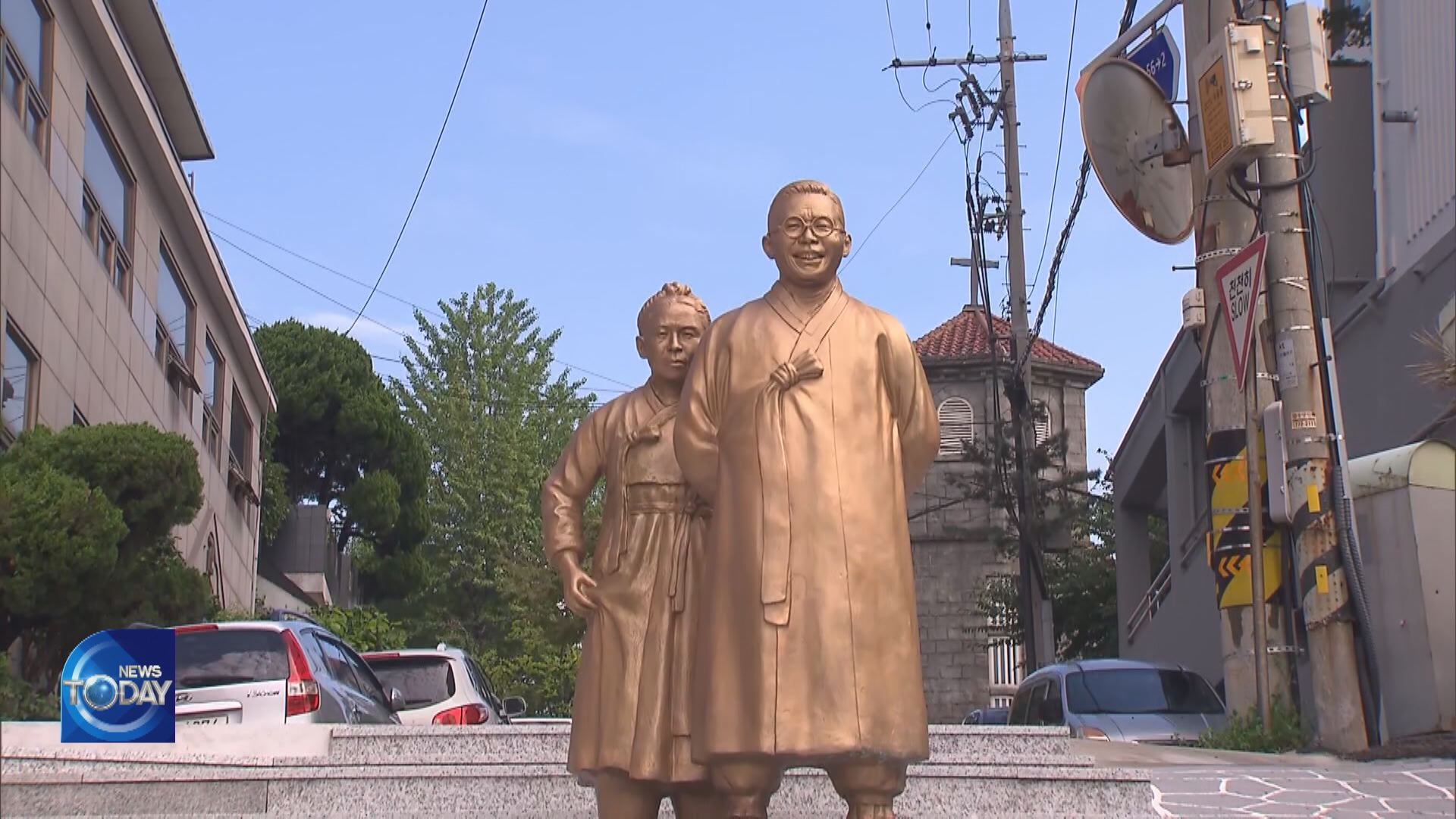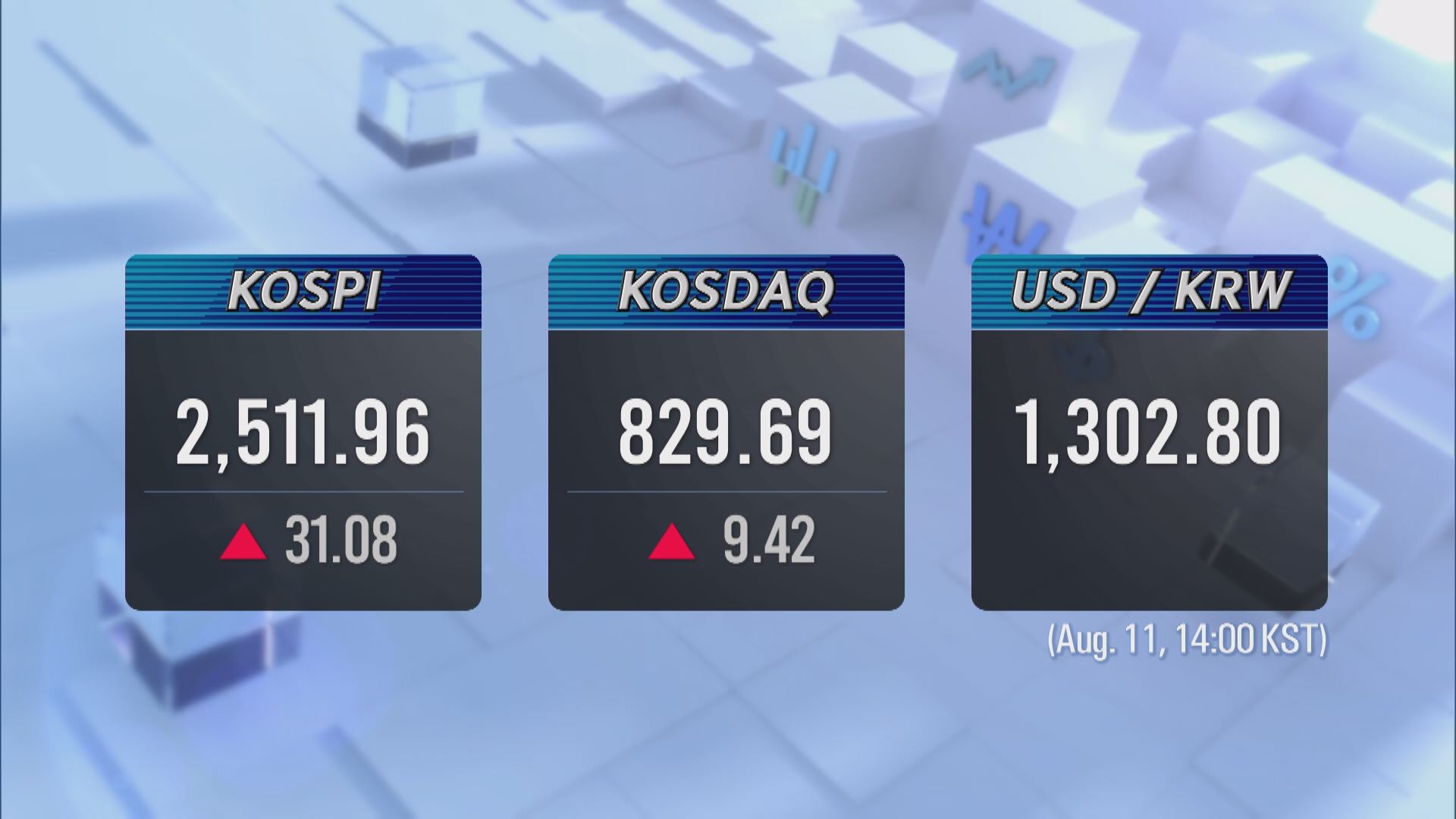KIM GU’S HISTORICAL STREET
입력 2022.08.11 (15:13)
수정 2022.08.11 (16:45)
읽어주기 기능은 크롬기반의
브라우저에서만 사용하실 수 있습니다.
[Anchor Lead]
In the vicinity of Gaehangjang Open Port Street in Incheon, there are sites where freedom activist Kim Gu were imprisoned twice and forced into labor. Ahead of Korea’s Independence Day on August 15th, this street was turned into Young Kim Gu’s Historical Street to commemorate his transformation from an ordinary young man named Kim Chang-su to independence activist Kim Gu.
[Pkg]
This was the site of an audit office where international affairs were handled after Incheon Port was opened in 1883. Independence activist Kim Gu was incarcerated twice in the prison here. A statue was erected in remembrance of Kim’s mother, Kwak Nack-won, who had devotedly cared for her imprisoned son.
[Soundbite] Kim Seo-wun(Jung-gu historical and cultural guide) : "His mother came here to make him breakfast, lunch and dinner."
There is a sculpture that depicts Kim Gu while he was forced to work at the Incheon Port construction site when he was imprisoned again in 1914. In his memoir, Baekbeom Ilji, he remembers Incheon as the most meaningful place. He had broken out of prison when he was sentenced to death at the age of 22 and was again locked up and forced to work in port construction at age 40. This area where death-row convict Kim Chang-su was reborn as freedom fighter Kim Gu has been turned into a historical street honoring the young Kim. Young people from all over the country are visiting this area to learn about Kim Gu’s suffering and patriotic spirit.
[Soundbite] Kim Tae-hee(Taebaek City Youths Historical Book Club) : "I was moved by the thought that a great man had walked this street and this area contains so many stories."
[Soundbite] "We make history! Go, Historical Book Club!"
There will be several historical trails renamed in the area such as Labor Street, Imprisonment Street and the Prison Break Street. This historical site steeped in Kim Gu’s blood and sweat is becoming a new tourist attraction where visitors can better understand the turbulent history under Japanese colonial rule in the early 20th century.
In the vicinity of Gaehangjang Open Port Street in Incheon, there are sites where freedom activist Kim Gu were imprisoned twice and forced into labor. Ahead of Korea’s Independence Day on August 15th, this street was turned into Young Kim Gu’s Historical Street to commemorate his transformation from an ordinary young man named Kim Chang-su to independence activist Kim Gu.
[Pkg]
This was the site of an audit office where international affairs were handled after Incheon Port was opened in 1883. Independence activist Kim Gu was incarcerated twice in the prison here. A statue was erected in remembrance of Kim’s mother, Kwak Nack-won, who had devotedly cared for her imprisoned son.
[Soundbite] Kim Seo-wun(Jung-gu historical and cultural guide) : "His mother came here to make him breakfast, lunch and dinner."
There is a sculpture that depicts Kim Gu while he was forced to work at the Incheon Port construction site when he was imprisoned again in 1914. In his memoir, Baekbeom Ilji, he remembers Incheon as the most meaningful place. He had broken out of prison when he was sentenced to death at the age of 22 and was again locked up and forced to work in port construction at age 40. This area where death-row convict Kim Chang-su was reborn as freedom fighter Kim Gu has been turned into a historical street honoring the young Kim. Young people from all over the country are visiting this area to learn about Kim Gu’s suffering and patriotic spirit.
[Soundbite] Kim Tae-hee(Taebaek City Youths Historical Book Club) : "I was moved by the thought that a great man had walked this street and this area contains so many stories."
[Soundbite] "We make history! Go, Historical Book Club!"
There will be several historical trails renamed in the area such as Labor Street, Imprisonment Street and the Prison Break Street. This historical site steeped in Kim Gu’s blood and sweat is becoming a new tourist attraction where visitors can better understand the turbulent history under Japanese colonial rule in the early 20th century.
■ 제보하기
▷ 카카오톡 : 'KBS제보' 검색, 채널 추가
▷ 전화 : 02-781-1234, 4444
▷ 이메일 : kbs1234@kbs.co.kr
▷ 유튜브, 네이버, 카카오에서도 KBS뉴스를 구독해주세요!
- KIM GU’S HISTORICAL STREET
-
- 입력 2022-08-11 15:13:33
- 수정2022-08-11 16:45:06

[Anchor Lead]
In the vicinity of Gaehangjang Open Port Street in Incheon, there are sites where freedom activist Kim Gu were imprisoned twice and forced into labor. Ahead of Korea’s Independence Day on August 15th, this street was turned into Young Kim Gu’s Historical Street to commemorate his transformation from an ordinary young man named Kim Chang-su to independence activist Kim Gu.
[Pkg]
This was the site of an audit office where international affairs were handled after Incheon Port was opened in 1883. Independence activist Kim Gu was incarcerated twice in the prison here. A statue was erected in remembrance of Kim’s mother, Kwak Nack-won, who had devotedly cared for her imprisoned son.
[Soundbite] Kim Seo-wun(Jung-gu historical and cultural guide) : "His mother came here to make him breakfast, lunch and dinner."
There is a sculpture that depicts Kim Gu while he was forced to work at the Incheon Port construction site when he was imprisoned again in 1914. In his memoir, Baekbeom Ilji, he remembers Incheon as the most meaningful place. He had broken out of prison when he was sentenced to death at the age of 22 and was again locked up and forced to work in port construction at age 40. This area where death-row convict Kim Chang-su was reborn as freedom fighter Kim Gu has been turned into a historical street honoring the young Kim. Young people from all over the country are visiting this area to learn about Kim Gu’s suffering and patriotic spirit.
[Soundbite] Kim Tae-hee(Taebaek City Youths Historical Book Club) : "I was moved by the thought that a great man had walked this street and this area contains so many stories."
[Soundbite] "We make history! Go, Historical Book Club!"
There will be several historical trails renamed in the area such as Labor Street, Imprisonment Street and the Prison Break Street. This historical site steeped in Kim Gu’s blood and sweat is becoming a new tourist attraction where visitors can better understand the turbulent history under Japanese colonial rule in the early 20th century.
In the vicinity of Gaehangjang Open Port Street in Incheon, there are sites where freedom activist Kim Gu were imprisoned twice and forced into labor. Ahead of Korea’s Independence Day on August 15th, this street was turned into Young Kim Gu’s Historical Street to commemorate his transformation from an ordinary young man named Kim Chang-su to independence activist Kim Gu.
[Pkg]
This was the site of an audit office where international affairs were handled after Incheon Port was opened in 1883. Independence activist Kim Gu was incarcerated twice in the prison here. A statue was erected in remembrance of Kim’s mother, Kwak Nack-won, who had devotedly cared for her imprisoned son.
[Soundbite] Kim Seo-wun(Jung-gu historical and cultural guide) : "His mother came here to make him breakfast, lunch and dinner."
There is a sculpture that depicts Kim Gu while he was forced to work at the Incheon Port construction site when he was imprisoned again in 1914. In his memoir, Baekbeom Ilji, he remembers Incheon as the most meaningful place. He had broken out of prison when he was sentenced to death at the age of 22 and was again locked up and forced to work in port construction at age 40. This area where death-row convict Kim Chang-su was reborn as freedom fighter Kim Gu has been turned into a historical street honoring the young Kim. Young people from all over the country are visiting this area to learn about Kim Gu’s suffering and patriotic spirit.
[Soundbite] Kim Tae-hee(Taebaek City Youths Historical Book Club) : "I was moved by the thought that a great man had walked this street and this area contains so many stories."
[Soundbite] "We make history! Go, Historical Book Club!"
There will be several historical trails renamed in the area such as Labor Street, Imprisonment Street and the Prison Break Street. This historical site steeped in Kim Gu’s blood and sweat is becoming a new tourist attraction where visitors can better understand the turbulent history under Japanese colonial rule in the early 20th century.
이 기사가 좋으셨다면
-
좋아요
0
-
응원해요
0
-
후속 원해요
0














![[단독] 골프연습장 아니라더니<br>…‘한남동 골프연습장’ 도면 입수](/data/news/2025/07/01/20250701_Uh8Jnu.png)


이 기사에 대한 의견을 남겨주세요.